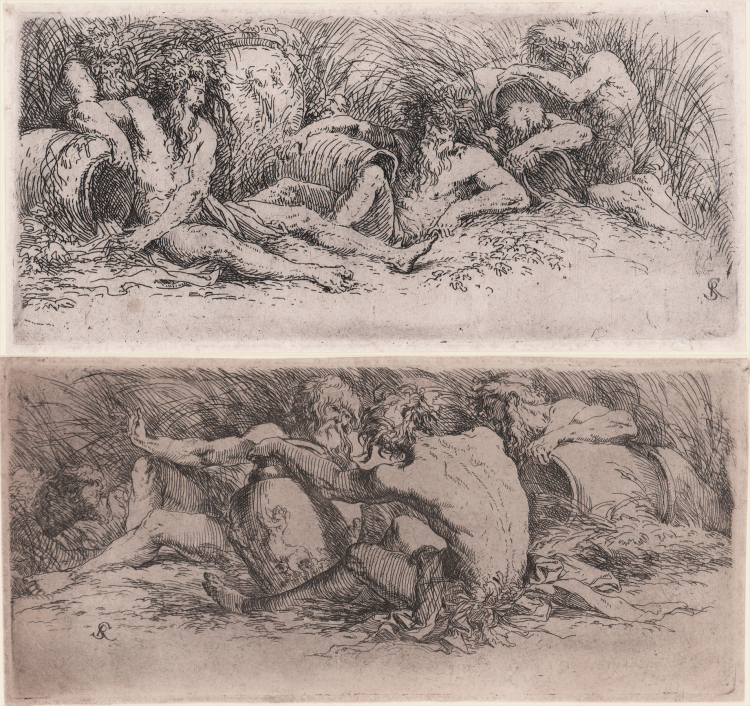







| Reference: | S25422 |
| Author | Salvator ROSA |
| Year: | 1650 ca. |
| Measures: | 210 x 94 mm |






| Reference: | S25422 |
| Author | Salvator ROSA |
| Year: | 1650 ca. |
| Measures: | 210 x 94 mm |
Pair of etchings and drypoint, about 1650/60, signed on plate at the bottom right and left respectively.
Only state. Beautiful proof, printed on contemporary laid paper without watermark, with narrow margins, in excellent condition. The two prints documenting the ability of Rosa to recreate a fairytale Hellenistic, where mythological gods are represented in perfect harmony with the surrounding nature.
Rotili believes that the works are dated around 1651/6, arguing that symbolize the rivers of the four continents, in analogy with the Fountain of the Four Rivers in Piazza Navona created by Gian Lorenzo Bernini, 1648/51.
|
Bartsch 15&16; Rotili 16 & 17; Wallace 96 & 97; Massari, Tra Mito ed Allegoria, p. 438, 163 & 164; Costamagna, Incisori Napoletani del’600, 63 & 64.
|
Salvator ROSA (Napoli 1615 - Roma 1673)
|
Like Testa, Castiglione and Della Bella, Salvator Rosa considered the art of engraving the best technique to express his talent and, it is not by chance that he is considered, together with the already mentioned artists, one of the protagonists of Italian seventeenth-century art.
Rosa was an extremely eclectic person; his main models in art were the classicism of Carracci, the naturalism of Ribera, the contemporary Roman painting and the ancient world.
From the latter in particular, Rosa drew inspiration for his engravings, whose subjects come from the old Stoic philosophy, with the glorification of virtues though allegories. We have also to consider his passion for esotericism, which inspired him with pictorial compositions with necromancy.
His technique and total command of etching enabled his prints to be appreciated even from his contemporaries, copied by them and highly requested by collectors.
|
|
Bartsch 15&16; Rotili 16 & 17; Wallace 96 & 97; Massari, Tra Mito ed Allegoria, p. 438, 163 & 164; Costamagna, Incisori Napoletani del’600, 63 & 64.
|
Salvator ROSA (Napoli 1615 - Roma 1673)
|
Like Testa, Castiglione and Della Bella, Salvator Rosa considered the art of engraving the best technique to express his talent and, it is not by chance that he is considered, together with the already mentioned artists, one of the protagonists of Italian seventeenth-century art.
Rosa was an extremely eclectic person; his main models in art were the classicism of Carracci, the naturalism of Ribera, the contemporary Roman painting and the ancient world.
From the latter in particular, Rosa drew inspiration for his engravings, whose subjects come from the old Stoic philosophy, with the glorification of virtues though allegories. We have also to consider his passion for esotericism, which inspired him with pictorial compositions with necromancy.
His technique and total command of etching enabled his prints to be appreciated even from his contemporaries, copied by them and highly requested by collectors.
|